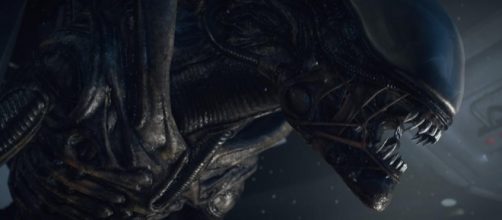You can’t talk about Alien without talking about that scene. The iconic chest-burster scene is the first scary moment in the 1979 sci-fi horror classic. In fact, it’s the moment it gains its horror label – before that moment, it’s just regular science-fiction, which is what makes it so shocking. The Film’s biggest strength is its pacing, actually. Director Ridley Scott isn’t in the business of jumping right in for cheap scares, like a lesser artist such as Rob Zombie would. He builds the story up to this point, and when it hits, it’s all the more effective.
Having been impregnated by an alien egg, Kane (John Hurt) isn’t expected to make it much longer. But after a medical examination, it seems as though he’s going to be fine, and the irony of the scene that makes it work so well is that the crew is actually celebrating the fact he made it out. And then, in the middle of the party in one of the most gut-wrenching displays in Cinema history, the creature that will make life a living hell for those aboard the Nostromo births itself through his chest.
Alien isn’t a “scrapbook horror film”
In the same way the best action films’ action sequences lead naturally into more action sequences instead of what I call a “scrapbook action film” where they just stick a bunch of action in an order that looks pretty, Alien isn’t a “scrapbook horror film.” Its biggest scares lead organically into even bigger scares.
After the freshly-birthed little baby xenomorph scurries off, the next time we see it is yet another petrifying reveal. The alien is already fully grown. It’s shocking to us and to Brett (Harry Dean Stanton) that in such a short space of time it went from being small enough to hold in one hand to eight feet tall. The moment in the air vent when Dallas is looking around with the flamethrower, and turns to see that the alien is perched right behind him is particularly startling, and that’s just lighting.
Stellar performances from a cast who were either great already or would go on to be great. Sigourney Weaver and John Hurt are now legendary, a pair of pop culture icons in their own right, not just because of Alien’s legacy. And, to a lesser extent, Tom Skerritt (Viper in Top Gun), Ian Holm (Bilbo Baggins), and Stanton (Godfather Part II – the best one).
These are heavy-duty actors who know what they’re doing. Scott's in good hands with them, and they're in good hands with him. This synergy results in a masterpiece.
Ellen Ripley is the leading symbol of female empowerment in the movies
But here’s what I liked best about Alien: the protagonist is a woman. Not a damsel in distress who can’t defend herself, a bona fide badass who can defend herself better than any of the men on the ship. And it’s not some political statement like it would be in today’s PC world – Ellen Ripley just happens to be a woman, and that’s what’s great. Ripley is the leading symbol of female empowerment in the movies. She single-handedly kills the xenomorph that a whole team of men couldn’t kill, proving that women could handle the hands-on action that was until then allocated to men.
Alien addresses Hollywood's lack of gender diversity
Women are shockingly underrepresented in films outside the Alien franchise. Actresses have a hard time finding a substantial role, they’re just pigeonholed as a substantial role’s two-dimensional wife. That’s why when a great character like Ripley or Sarah Connor comes along, it’s something special.
In Alien, Sigourney Weaver holds a gun as confidently and convincingly as Stallone or Schwarzenegger, which goes to show that appearing tough has nothing to do with gender. It proves Hollywood isn’t entirely sexist, even if it is mostly. Even if the corporate bigwig studio heads still believe women don’t sell, there are still directors like Scott and James Cameron and Quentin Tarantino and Joss Whedon, not to mention female directors like Sofia Coppola and Nicole Holofcener, who still create strong roles for women, which do sell, by the way.

